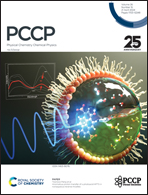Intramolecular charge transfer enhanced optical limiting in novel hydrazone derivatives with a D1–D–Ai–π–A structure†
Abstract
The present paper investigates one of the hydrazone derivatives (BTH with a D–π–A structure) based on density functional theory. With the computation results of ground state absorption (GSA), excited-state absorption (ESA) and multi-photon absorption (MPA), the optical limiting effect observed in the experiment for the BTH molecule can be well predicted and elucidated by the MPA-ESA mechanism. The analysis of the hole–electron and the electron density differences between two transition states reveal that the main transitions involved in the GSA and ESA of BTH could be recognized as local excitation. Based on these observations, four novel hydrazone derivatives based on the BTH unit with a D1–D–Ai–π–A structure were designed to promote intramolecular charge transfer (ICT). It shows that the ICT effect is well improved by adding the D1 and Ai units. Compared with the original BTH molecule, the main bands of GSA and ESA of D1–D–Ai–π–A molecules are both red-shifted. In addition, GSA, ESA and MPA probabilities are all improved because the obvious charge transfer character results in the transition dipole moment change from localized to delocalized. Accordingly, the optical limiting effect in these hydrazone derivatives is well enhanced. These observations provide guidance for designing novel optical limiting materials based on the hydrazone derivatives.



 Please wait while we load your content...
Please wait while we load your content...